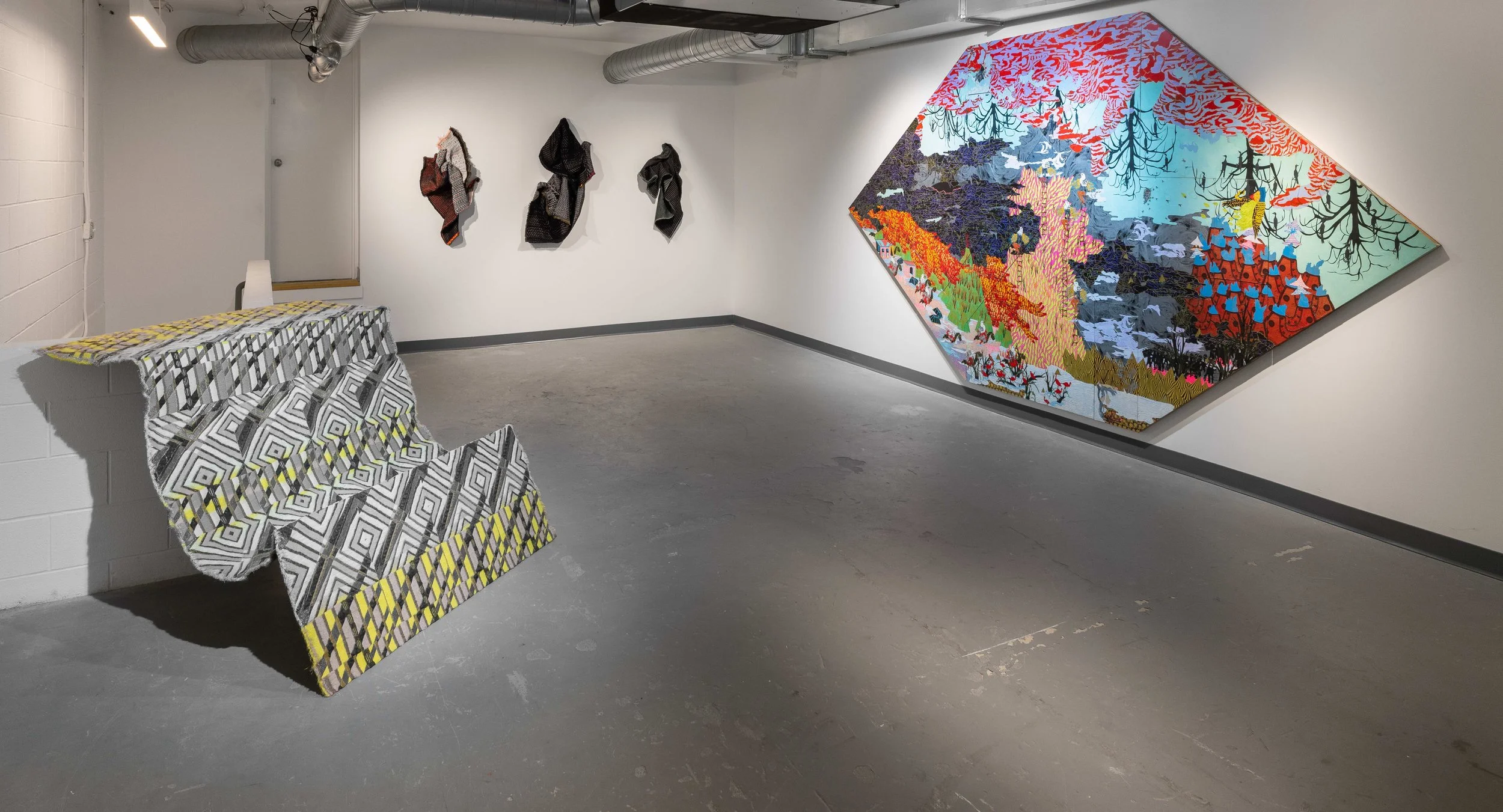IN CONVERSATION:
Jungil Hong’s exhibit “The Time Being,” previously on view in the Spring/Summer of 2024, explores the passage of time, methods of labor, and facets of identity.
By Sophia Blythe, Curatorial Intern
Discussing “The Time Being” over a year since its opening, Hong expresses a continued admiration for time; its trials, tribulations, endurance, and beauty. This appreciation for an aspect of life that we can’t control is at the essence of Jung’s practice and an upcoming body of work.
SB: As you worked on the installation, what surprised you most from the time of conceptualization to realization?
JH: Kate and I had been talking about the show for over a year, and the form kept shifting. In the end, bringing older works into conversation with new pieces opened a perspective I hadn’t expected. I began to see my varied processes– sewing, printing, weaving, collage– as extensions of self-portraiture. It shifted how I framed the work and how I could receive it. That shift in perspective has shaped how I’m thinking about what comes next.
SB: Odd-Kin refers to a kinship between a group that extends beyond blood relatives, including non-human objects and inanimate objects. Given this, and your experience realizing your work and it now existing in the OK space, what have you noted about the relationship between you, your art, and people?
JH: I’ve really appreciated my collaboration with Kate– her eye revealed things in my work I might have overlooked. I don’t always immediately know what my work is; sometimes it’s through another person’s presence, attention, or words that a kind of decoding happens.
There are many layers, and the excavation happens over time. Understanding deepens with continued practice, and with opportunities like ODD-KIN, where I can step back and look at the arc of the work as a whole. There is always a throughline, and tracing that pattern is a privilege. Collaboration moves in these shadows, at times slipping, at times tightening, like warp and weft under tension.
SB: From where do you draw inspiration?
JH: Trees are a constant teacher. Crown shyness– the way they leave space between each other, feels like respect in their growth. I also think about how their roots live in the dark while their branches reach into the light, each sustaining the other.
Rocks feel like entire universes, each one holding memory and presence. And always, it returns to endurance– the force that patinas, shapes, and transforms everything.
SB: Tell me a little bit about your studio practice.
JH: Returning to the studio after many years felt like something dormant had finally woken up. Having a child folded life inward for a time, and there wasn’t the mental space flowing as I remembered– that continuous firing of ideas, the drive to solve problems, to see materials and processes, and intuitively know how they might come together. Now that space has opened again.
I want my practice to be seamless with life– not only what I make in the studio, but also the garden, the objects I collect, the gatherings I hold. Everything folds back into the work, and continuity remains at the center– not something to battle, but something that carries and teaches.
SB: Having realized this work, are there any ideas starting to take root about where you want to go next?
JH: My next body of work is Mother: The Time Being. It’s rooted in maternal lineage, memory, and migration, with my mother at the center. I’m working with textiles, glass, and family materials to explore what is carried across generations and what is lost. The project is still evolving, but it feels like a natural extension of Jungil Hong: The Time Being.
SB: Is there anything you would like to share that I haven’t asked?
JH: I keep thinking about how things change– how materials wear, surfaces patina, and beauty emerges through time passing. The test of time reveals what holds, what transforms, and what continues to speak. I’m drawn to salvaged, found, and gifted objects because each carries a story, shaped by lived experience. That depth, the accumulation and endurance– is how I want to curate both my practice and my life.
Tory Fair’s show, “Protest Flowers,” on view through September 7, 2025, embodies viewer interaction and dialogue in her sunflowers
By Sophia Blythe, Curatorial Intern

